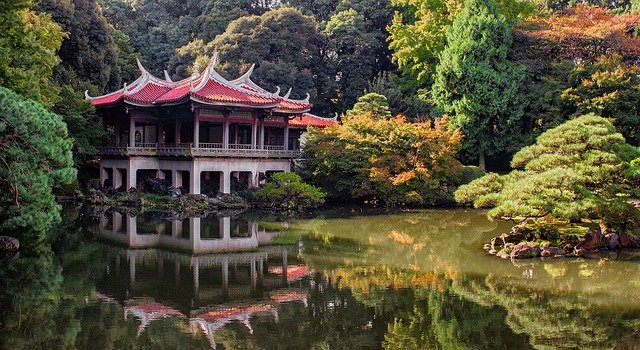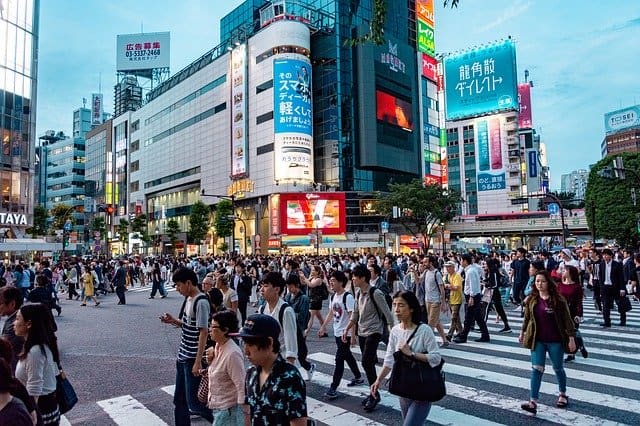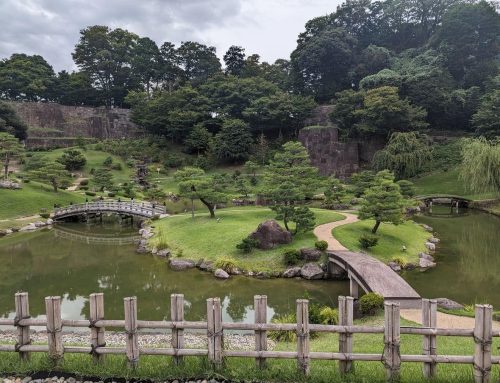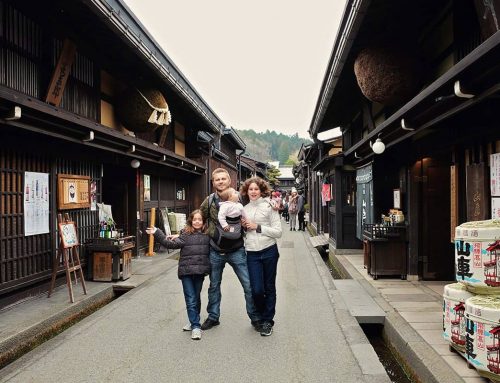Tokyo, historically known as “Edo” is the capital of Japan. It is the largest metropolitan city in Japan. Tokyo is made up of southern, northern, western, central, and eastern districts. Northern Tokyo is a quiet territory that does not entertain visitors very much. It is a very residential area but in unique neighborhoods. Popular neighborhoods include Itabashi and Toshima.
Southern Tokyo is a modern green environment that features the Tokyo Tower and cherry trees on every street. It is a great art community with millennials chugging beer on sidewalk avenues along-side the Meguro River that runs through town. Popular neighborhoods include Odaiba and Roppongi.
Western Tokyo is a fashionable 24/7 active region. Universities, art galleries, design studios, and more are everywhere. It is a mecca for trendy, innovative thinkers. Picnicking outdoors under shading trees is not uncommon. Granted that social distancing is still in effect. Popular neighborhoods include Harajuku and Nakano.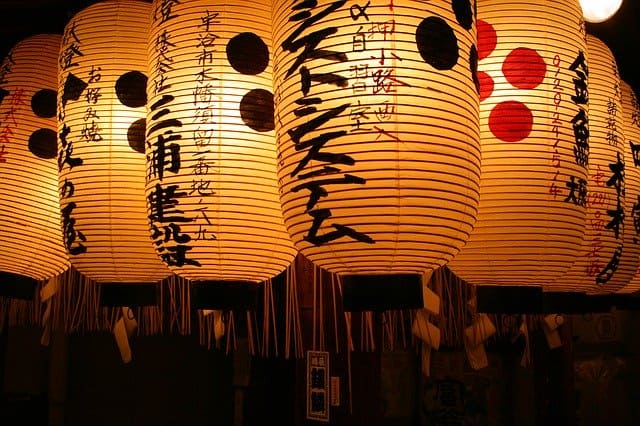
Eastern Tokyo is where modern meets historic and where traditions collide in peaceful harmony. Your temples and pagodas exist here next to skyscrapers, outdoor cafes, upscale shops, and handmade local crafts that can be seen everywhere. Popular neighborhoods include Fukagawa and Kasai.
Central Tokyo is the hub of big business and bustling enterprises. Central Tokyo features the Imperial Palace, the Tokyo Dome, upscale shopping centers, geisha districts, and other elegant sites. Popular neighborhoods include Ginza and Tsukiji.
Table of Contents
Tokyo Travel Restrictions
Visiting Tokyo today carries a warning from The Centers for Disease Control and Prevention (CDC). They have issued a cautionary travel health advisory for Japan because of the coronavirus. This infectious virus is still a cautionary tale in Tokyo and across many cities and districts in Japan. Governor Koike of Tokyo has placed certain restrictions on cultural sites, restaurants, travel, and more. However, most places of attractions in Tokyo are opening with masked and sanitized requirements.
Currently, travelers arriving in Tokyo beginning in September 2020, will be tested upon their arrival and upon their departure. Travelers arriving in Tokyo must undertake a coronavirus test and remain quarantined for 2 to 3 hours to await its results. Travelers with good health are required to self-quarantine and provide their own transportation for 14 days.
Tokyo’s Two Airports and Transportation Systems
Prior to the coronavirus pandemic, outside travelers had a choice to fly into Tokyo from two major airports in Tokyo. There is Narita Airport and Haneda Airport. Narita is 1.5 hours or 47 miles from downtown Tokyo, while Haneda is 40 minutes or 13 miles from downtown.
Monorail systems are available to take from either airport to the center of town. Before the COVID-19 outbreak, you could quickly and easily travel to Tokyo from the airport via train, bus, taxi, or a rental car. Today, there are major transportation changes. Rail transportation carries far fewer individuals due to school closings and staggered office worker schedules.
However, both airports are open but with sanitary restrictions. Both airports generally provided several options for great shopping and dining amenities. Currently, due to COVID-19, there are restrictions involving restaurant seating and retail shopping. To note, that when arriving in Tokyo, hanging around the airport is somewhat discouraged. The Tokyo Health Department would like travelers to exit the airport after your coronavirus testing procedure.
Be Kind and Patient
Remember, that if authorities are a little aggressive in some of their sanitary procedures, this virus is a killer. Please remain kind because Japan, as an ancient city, still defines their culture in politeness. In your travel destinations throughout Tokyo or if you travel to places nearby like Ho Chi Minh City, a simple “konnichi-wa” or good day is still respectful. Use terms like please or “kudasai,” and thank you or “arigato gozaimasu.”
Yesterday and Today Dining
When visiting Tokyo, if you are a foodie like I am, Tokyo has some of the most delicious and unique dining experiences anywhere. Many restaurants in Tokyo have received top Michelin stars. Even small cafes in any of the Tokyo alleyways or leading hotels are known for their delectable and culturally derived dishes. Tokyo has a major impact on Japan’s top-chef cuisine environment.
Before the virus pandemic, Tokyo’s restaurants had unique, yet standard dining requirements. Lunchtime is strictly 12 p.m. to 2:00 p.m. This lunchtime has still adhered due during the pandemic. However, the number of diners is limited. Because many restaurants in Tokyo are internationally popular, reservations are required and so is a face mask. Even open market fishmongers are required to wear face masks.
Also, prior to the pandemic, Tokyo diners could sit close to each other with their dishes rotated in front of them. In March 2020, many leading restaurants stopped the rotating dish concept. Instead, diners were supplied a restaurant tablet for customers to use to order their dishes. Also, guidelines were issued requesting that customers sit with a table partition between themselves and others.
How To Traverse Dining in Tokyo During Pandemic
Due to rising COVID-19 cases, in April 2020, the Tokyo government announced that restaurants should close or restrict their hours. The Japanese government could not legally order restaurants to close, just firmly requesting that they do so. However, the Tokyo Metropolitan Government is keeping restaurants, sidewalk stalls, and pubs open with restricted hours and seating limitations.
Currently, Tokyo restaurants and other small eating establishments are open until 8:00 pm.
Reservations are required. Not from haughtiness, but Tokyo restaurants and other eatery styles are considered a “wa” or a personal experience. Therefore, call ahead to dine in Tokyo restaurants. Many Tokyo restaurants that sell very popular rice bowls and mini-meals are a wait-in-line environment.
Fine-dining restaurants that feature dishes inspired by France, Italy, traditional Japanese chefs include Washoku, The Rally Table, Ruth’s Chris, Optimum Eats, Sushi Saito, and others from Tokyo’s 100,000 restaurants. Even these restaurants are struggling slightly.
Many restaurants in Tokyo refuse to give up. Many fine-dining restaurants to low-end dining cafes have incorporated a “takeout” feature. Other restaurants are offering limited delivery service. Restaurant owners are offering lunches and dinner platters with a fine wine delivered to your location.
Other restaurants have decreased the number of days in which they are open. I don’t know if it is a sad event to receive a fine-dining curry dish with a gâteau chocolate fondant from the Negombo 33 restaurant in lieu of dining-in luxury. Well, for now, the fine-dining menu options remain very delectable.
7 Top Tips for Visiting Japan with Baby
Take A Trip to Ho Chi Minh
Okay, from Tokyo, you are ready to travel a little more than 5 hours to visit Ho Chi Minh City. Landing at Tan Son Nhat International Airport in Vietnam, you are 4 miles north of Ho Chi Minh City. Known both as Saigon or Vietnam, this Southeast Asian city is a robust and flourishing city with modern and traditional values. Vietnam is a land of great economic value to tourists. You can eat, sleep, explore, travel, and play at very inexpensive prices.
Vietnam is a city of districts (24) or distinct neighborhoods. Saigon or Ho Chi Minh is in District 1 with skyscrapers, fine-dining, and an exciting, active nightlife. Next to towering skyscrapers are Buddhist shrines, decorative ancient temples, and historic pagodas that date back hundreds of years.
Arriving in Ho Chi Minh
Earlier this year in the month of February 2020, Ho Chi Minh City’s health department and the Vietnamese Ministry of Health decided to allow passengers to enter the city after a medical exam and filling out a document stating that they were healthy and without any symptoms.
At the request of the World Health Organization, The Vietnamese Ministry of Health and the Tourism Ministry voted to shut down Vietnam during January and February of 2020. However, as of April 2020, Vietnam lifted restrictive travel measures and the airport and businesses slowly opened. Face masks and strict hygiene measures however remain in place today.
Currently, Ho Chi Minh City is open to travelers but with strict sanitation restrictions. Yes, you can still enjoy their sandy beaches with limited restrictions and face mask requirements. In March of 2020, the restaurants within the city and nearby were closed down.
Dining in Saigon and Throughout Vietnam
Slowly Ho Chi Minh City reopened restaurants, bars, clubs, and businesses with restrictive hours of operation. Also, strict social isolation guidelines have been implemented where there is a gathering of more than 20 people.
Currently, restaurants and local eateries in Vietnam and Ho Chi Minh must comply with these guidelines. However, Saigon, or Ho Chi Minh, features roof-top dining experiences that remain open. Ho Chi Minh has a distinctive war-time history. Because of this, it is one of Vietnam’s more popular tourist destinations.
Ho Chi Minh is An Economic Delight
Saigon has many exciting destinations and accommodations for all who visit. Even if you are watching your money, you can pack back your way through the city, staying at affordable hostels and inns – but bring your face mask. Now that you have visited the growing city of Ho Chi Minh, you wish to return from Ho Chi Minh City to Tokyo. From Ho Chi Minh City, you will fly 8 hours back to Tokyo with fares that are just under $100.
To answer your question, as to whether the quarantine remains in effect for your return visit from Ho Chi Minh City, the answer is yes. The same 14-day quarantine measures for entering Tokyo from a foreign country remains the same even when you return from Vietnam.


